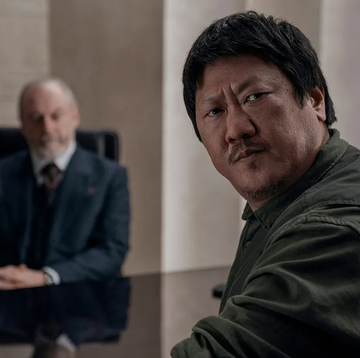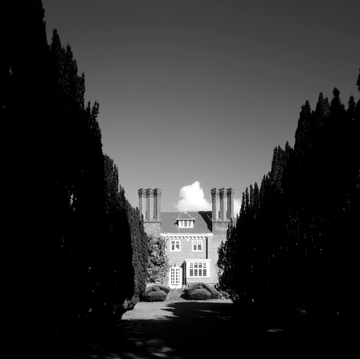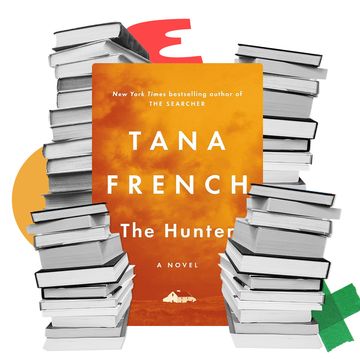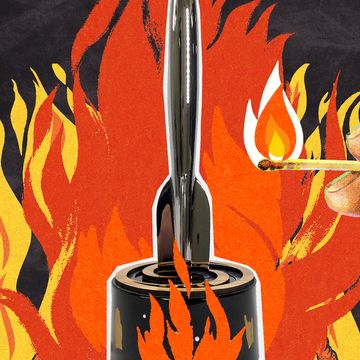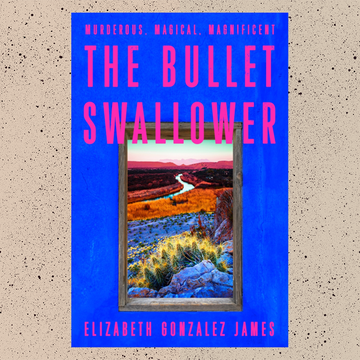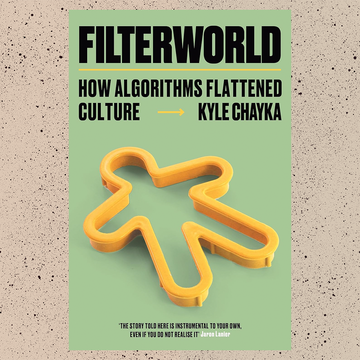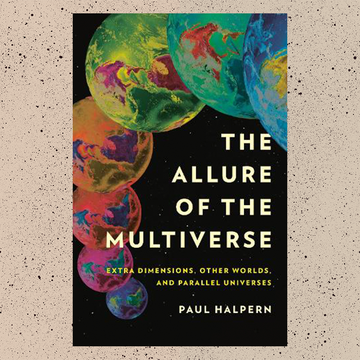If this year has taught us anything, it's that real life can trump fiction for sheer audacity of imagination - no pun intended.
To that end, here are 10 of the most captivating non-fiction novels of 2016...
The Noise Of Time - Julian Barnes
Julian Barnes has never been afraid of tackling the big issues. Most recently his 2011 Man Booker Prize-winning The Sense of an Ending explored love, truth, memory and happiness, and prompted one of the Booker judges to describe Barnes as "an unparalleled magus of the heart".
His much-anticipated follow-up, The Noise of Time, takes aim at a similarly imposing set of themes; namely the interplay between art and power, and the nature of human courage, explored through the life of Soviet-era composer Dmitri Shostakovich.
The impossibility of Shostakovich's predicament becomes increasingly clear. He is sent on a tour of America as an example of Soviet musical supremacy despite his work being suppressed in Russia, and is at one point assigned a hapless tutor sent by the Party to "educate him" in the principles of Marxism-Leninism. Throughout, he resists joining the Party, a situation that becomes ever more untenable. In The Noise of Time, Shostakovich (or Barnes) likens life in Stalinist Russia to a "catalogue of little farces adding up to an immense tragedy". The same could be said for this densely written, masterfully told tale.
Sick in the Head - Judd Apatow
Judd Apatow is a man who has known comedy all his life. Long before he established the creative network that begat Freaks and Geeks (1999–2000), Anchorman: the Legend of Ron Burgundy (2004), and Girls (2012–), Apatow was a committed comedy nerd.
As a teenager, he parlayed a job at his high-school radio station into the chance to interview his idols, including Jerry Seinfeld, Jay Leno and Garry Shandling. Now, these conversations, and new interviews, have been collected in a book, Sick in the Head: Conversations About Life and Comedy.
Apatow has coaxed friends and idols alike into candid, unguarded discussions, including Mel Brooks on political correctness, Louis CK on drugs and Amy Schumer on sex.
Meanwhile, over on Netflix, Apatow is the co-creator of Love, a modern-relationships 10-parter that is frank and very funny throughout. Sample dialogue: "This weekend... every time I want to go smoke weed, I do 15 push-ups. Every time I want to masturbate, I'm gonna do 20 sit-ups. That way, by the end of the weekend I'll be totally ripped and I'll get high on self-esteem."
Electronic Dreams - Tom Lean
Given that it took more than half a century for the genius scientist Alan Turing to be recognised as the man who, basically, won World War II by inventing the computer, it's something of a surprise to see historians and curators already turning to the recent electronic age. But it's a welcome development: a new book and a new exhibition — unrelated — reveal fascinating stories and cutting-edge creativity.
Tom Lean's Electronic Dreams: How 1980s Britain Learned to Love the Computer, details the boom and busts of games and computer-making in the late Seventies and Eighties. Lean has spoken to all the major players, as well as lesser-known ones, and packed his pages with nuggety info to write the first good book on the subject.
At the Whitechapel Gallery in London, Electronic Superhighway goes back a little further in time, to 1966, in order to bring together half a century of art inspired by and made with computer and internet technology. It's immediately nostalgic and most of the art you won't have seen before. Make a Kraftwerk playlist for when you visit to become one with the machine(s).
We'll All Be Murdered in Our Beds: the Shocking History of Crime Reporting In Britain - Duncan Campbell
In February, Operation Elveden closed after £14.7m pounds and nearly five years spent by the Metropolitan Police investigating payments by journalists to police and members of the public. Duncan Campbell, in just one of the dozens of great stories in his new history of British crime reporting, only has to go back to 1953, and the trial of the serial killer John Christie, when the Sunday Dispatch newspaper was thwarted in its attempt to pay for the defence of a man who was eventually hanged for the murder of seven women — because the Sunday Pictorial had got there first. Different times indeed.
From Newgate prison chaplains writing biographies of gallows-bound men 340 years ago to the crowdfunded tweeting of Old Bailey trials, Campbell highlights investigative reporters as well as muckrackers. If he's effusive about both it's because he's worked among them for decades, including a stint as crime correspondent of the Guardian. He ends on the Hatton Garden heist; he'd known some of the convicted professionally for more than 30 years. A compelling guide to a (sometimes) noble profession.
A Very English Scandal - John Preston
When the former Liberal leader Jeremy Thorpe died in 2014, it meant new revelations were likely to emerge about a remarkable political scandal, one to rival the Profumo affair in terms of its sex-and-vice-like grip on the British imagination. The author and journalist John Preston has found new ways into the story, retelling it in captivating, at times laugh-out-loud, fashion.
In June 1979, Thorpe was found not guilty at the Old Bailey of conspiracy to murder and incitement to murder. The man he was accused of arranging a hitman for was Norman Scott, an alleged former lover. In October 1975, Scott was found on Exmoor cradling his dead Great Dane, and later said only a misfiring gun prevented him from stopping the assassin's next bullet. Jurors at the trial had to decide: was Thorpe, via friends of friends, closing the most potentially embarrassing chapter of a colourful backstory, or was a blackmailer and fantasist besmirching the good name of a 20-year MP who had paid his rent for a time out of sympathy?
Preston, who spoke at length with Scott and found a key player's privately published memoir, is under no illusions as to who did what. His book rattles along, revelation upon revelation — although the facts alone are couldn't-make-'em-up incredible. So is the supporting cast: Thorpe's mother, with her monocle and cigars; Boofy Gore, the Earl of Arran, who wore welly boots around the house to prevent bites from the badgers he kept; George Carman, mercurial binge-drinking QC. House of Cards has got nothing on this.
The Swordfish and The Star - Gavin Knight
Cornwall is one of Western Europe's poorest areas, but there is still money in fishing. Not the fortunes of old, but a wad of cash, shoved into calloused hands after days out on harsh seas, draws men to the 600 or so boats based in the port of Newlyn. Its quay has two pubs, The Swordfish and The Star, where that cash is often spent and where author Gavin Knight found many of the leading characters for his terrific new book about a hard and dangerous way of life.
For his previous book, the Orwell Prize-tipped Hood Rat, Knight spent two years embedded with anti-gang police in London, Glasgow and Manchester to grippingly detail both sides in UK urban warfare. Spending a similar time in the South West was less dangerous for him personally, but has not affected his ability to illuminate lives lived at the edges of society, cloaked in peril. The book is less about fishing (though there are tales of gunplay in mid-Atlantic) but more about what it means for the men, their families and futures, who live and die because of it. Knight recounts fascinating detail, but also shows a novelist's skill in painting a vivid picture of real Cornwall and real Cornish people: Shane Meadows meets The Perfect Storm.
The Voyeur's Motel - Gay Talese
In 1972, the magazine journalist Gay Talese was walking home across Manhattan from dinner with his wife Nan when they saw a sign for "Live Nude Models". Seeing her husband's curiosity aroused, Nan said it was fine for him to go inside and investigate. Talese went from being a customer of that massage parlour to running one, and then spending the Seventies working on Thy Neighbor's Wife, a non-fiction study of US sex. Talese's total commitment to research and Nan's remarkable understanding meant, at swinger's resorts and orgies, he did not sit on the sidelines taking notes. He and the book became the subject of magazine profiles.
A year before publication in 1981, Denver motel owner Gerald Foos wrote to Talese, to suggest that, given his current field of study, he might be interested in visiting the motel, to observe the guests' sexual practices in secret, something Foos had done since altering the building in the mid-Sixties to carry out his own study of carnal behaviour.
Talese said yes, made one visit, and then took delivery of Foos' detailed notebooks. So far, so unbe-fucking-lievable. What unfolds is even more so, from a moral, legal and journalistic standpoint, and it's all in the 84-year-old Talese's one-of-a-kind new book.
Rise of the Machines:The Lost History of Cybernetics - Thomas Rid
A year into World War II, British defences could only shoot down one per cent of German bombers over London. By August 1944, anti-aircraft shells with variable-time fuses, guided by newly developed microwave radar, were hitting two-thirds of V1 flying bombs. Human error, said the head of Anti-Aircraft Command, was being eliminated from warfare and "in the future, the machines would fight it out".
In Rise of the Machines, Thomas Rid, a professor of security studies at King's College London, shows that work on that radar system led to the birth of cybernetics, the study and creation of control systems in man, machine and both together. It's a powerful concept that has radically altered not just modern warfare, but counterculture, faith, video games, the internet, hacking, anarcho-resistance, robots and AI — plus the small matter of mankind's place as the machines become more intelligent. With a reporter's investigative nose for a story, Rid meets Chinese intelligence officers in Beijing and former hippies still enjoying the sun in San Francisco. He's spent years interviewing dozens of people, obtaining trust over dinners and drinks and filing freedom of information requests in multiple countries. He is the ideal guide to the recent past shaping our future.
Blitzed: Drugs in Nazi Germany - Norman Ohler
The Nazis were all on drugs! So far, so sensationalist but German writer Norman Ohler's absorbing new non-fiction book, Blitzed, makes the convincing argument that the Nazis' use of chemical stimulants, from the infantry all the way up to the Führer himself, played a crucial role in the successes, and failures, of the Third Reich.
Ohler looks at this phenomenon through two lenses. The first is wider: considering the ways the Germans sought to boost the performance and stamina of troops with stimulants. Ohler suggests the capitulation of France in 1940 was due to the Wehrmacht being given Pervitin, a pill whose active ingredient was methamphetamine, or crystal meth. The drug gave German forces a sense of fearlessness and drastically decreased the need for sleep, meaning the panzers could roll to the Belgian-French border in just three days — much faster than the French had ever thought possible.
The second strand of Ohler's story has a smaller focus, though one intrinsically linked to the bigger picture. It concerns the complicated relationship between Adolf Hitler and his physician, Dr Theodor Morell, who — Ohler claims — turned the Führer from a vegetarian ascetic to a dribbling addict over the nine years in which Hitler was in his "care". During a chance meeting at a dinner party, Hitler mentioned his chronic intestinal pains and Morell suggested he try Mutaflor, a reasonably effective probiotic still in use today. Its success led the Führer to demand stronger, quicker treatments from Morell for a variety of symptoms. By the time he died, says Ohler, Hitler had become a regular, even dependent, user of opiates and cocaine, even mixing the two as a "classic speedball".
Ohler argues that the Führer's drug use had a direct impact on certain outcomes of the war. At a meeting with Mussolini in 1943, at which Il Duce had planned to tell Hitler that Italy should leave the war, the dosed-up Nazi boss talked incessantly for three hours. Mussolini wasn't able to get a word in, and Italy stayed put. Where things get murkier, as Ohler knows, is when considering how much an intoxicated individual should be held responsible for his actions. Could chemical psychosis be used to explain the barbaric madness of, say, the Final Solution? Ohler makes his feelings on this particular point unequivocally clear.
It wouldn't have been desirable in Nazi Germany, of course, for the Wehrmacht's strength and bravery to be explained as nothing but a chemical high, or for Hitler to be seen as buoyed by something other than the National Socialist dream. As a result, documentation from the time is patchy, and Ohler's research ranges from the concrete: typed orders for huge quantities of Pervitin to be sent to exhausted frontline units; to the questionable: which substance was Morell disguising when he wrote that he'd injected Hitler with "X"?; to the speculative: could Hitler's erratic behaviour towards the end of the war be indicative of drug withdrawal? Some of these questions will resist a definitive answer but Ohler's book offers an intriguing angle on the motives and machinations of the Nazis and their leader.
Spaceman - Mike Massimino
"It's possible that Radiohead's OK Computer was recorded specifically to be listened to in space, and that everyone who's heard it on Earth is missing the full experience," writes Mike Massimino, in his autobiography, Spaceman. Massimino knows this because he's listened to OK Computer. In space. Unlike the vast majority of us — including Radiohead — he's had the full experience. But don't worry; he's going to explain it to you as best he can.
Because Mike Massimino is just your average guy from Queens, New York, who happens to have had a few experiences he'd like to share. Just your average guy with two master's degrees and a PhD from MIT, who trained his fricking retinas through sheer force of will so that he could pass his eye exam and get into Nasa, who rose up above all the other brilliant wannabe astronauts and got himself put on a shuttle to go on a spacewalk 350 miles above the ground and fix the Hubble telescope and help mankind's continued effort to understand the secrets of the universe. Twice.
Spaceman is a straight-talking, completely absorbing account of how Massimino managed to achieve all this, told with a "who, me?" incredulity that is as endearing as it is utterly unconvincing. But if you want to imagine that you, too, an ordinary Joe, are strapped to your seat in a shuttle that's about to blast through the atmosphere, or are looking through the helmet of your spacesuit at the multicoloured brilliance of pure starlight, or are noticing the impossible blue of Planet Earth while listening to late Nineties art rock, then Mike's your guy, and this is your book.
Home And Away: Writing The Beautiful Game - Fredrik Ekelund and Karl Ove Knausgård
As writing gigs go, this one was pretty sweet. Norwegian author Karl Ove Knausgaard and his friend, Swedish author Fredrik Ekelund, decided to watch the whole of the 2014 Fifa World Cup — Knausgaard on the sofa at home in Sweden, Ekelund in bars and stadia while visiting Brazil — and write each other emails (though they're described, a little pompously, as letters) expounding their thoughts along the way. These "letters" then became a book. The next question is: why the hell would anyone want to read it? If you're a Knausgaard fan — and, with international book sales of his autobiographical novel series My Struggle now in the multiple millions, there are many — you'll already know the answer. If not, allow us to explain.
Knausgaard is a writer with an astonishing ability to elevate the prosaic, not by superimposing great symbolic truths, but by examining it, describing it, almost fetishising it. This, after all, is the real stuff of existence. Reading his books, one starts from a position of disbelief at the minutiae he explores: about his work, his marriage, his upbringing, his family life — is he really telling me what he put in his kids' packed lunch? — especially once you realise such passages rarely reward you with a punchline. But if you persevere, you find yourself gradually absorbed into his world, you succumb to it, until you can't get enough of these details, and find yourself wanting to wallow in them forever. (Given that My Struggle stretches to six volumes which are still being gradually translated into English, you might just be in luck.)
Home and Away: Writing the Beautiful Game is no different. You might recoil from the concept, but it soon has you by the collar with the subtlest of grips. Knausgaard on football segues into Knausgaard on the current misappropriation of feminist principles, or Knausgaard on a Swedish poet he read as a teenager, or Knausgaard on trying to soothe a baby back to sleep at midnight, in as close an approximation of the workings of the mind — where all thoughts are equal — as can be committed to page. This time, however, he has a foil: Ekelund is a writer who is exuberant where Knausgaard is austere, who revels in life where Knausgaard observes, who provides a splash of light to Knausgaard's incessant shade. And who also really, really likes football.
Let's not forget, this is structurally a book about watching the World Cup, with games discussed at length (even if Knausgaard has a habit of falling asleep when watching them). Both writers played the game semi-seriously in their youth, so they know their stuff and riff on everything from the animalistic strangeness of Luis Suárez, the talismanic potential of Neymar (and how he looks like Limahl from Eighties' band Kajagoogoo), and the ordinary brilliance, or brilliant ordinariness, of Thomas Müller, to their respective love and hatred of Italy's Azzurri.
The effect is part lyrical, part familiar, part philosophical. Here is Knausgaard on Diego Maradona's importance to football: "It is a game. It is anti-seriousness. Anti-meaning. Anti-intellectual. It is the kitten chasing after the ball of wool, it is the horse running alongside the fence snorting, it is the falcon gliding on the wind, it is the otter sliding down the snow-covered mountain on its back, it is that which has no meaning, it is only fun. It is a sparkle. And no one had more of that sparkle than Maradona." As a reading experience, Home and Away is diverting, indulgent and stealthily enjoyable. Just as it probably was to write.





